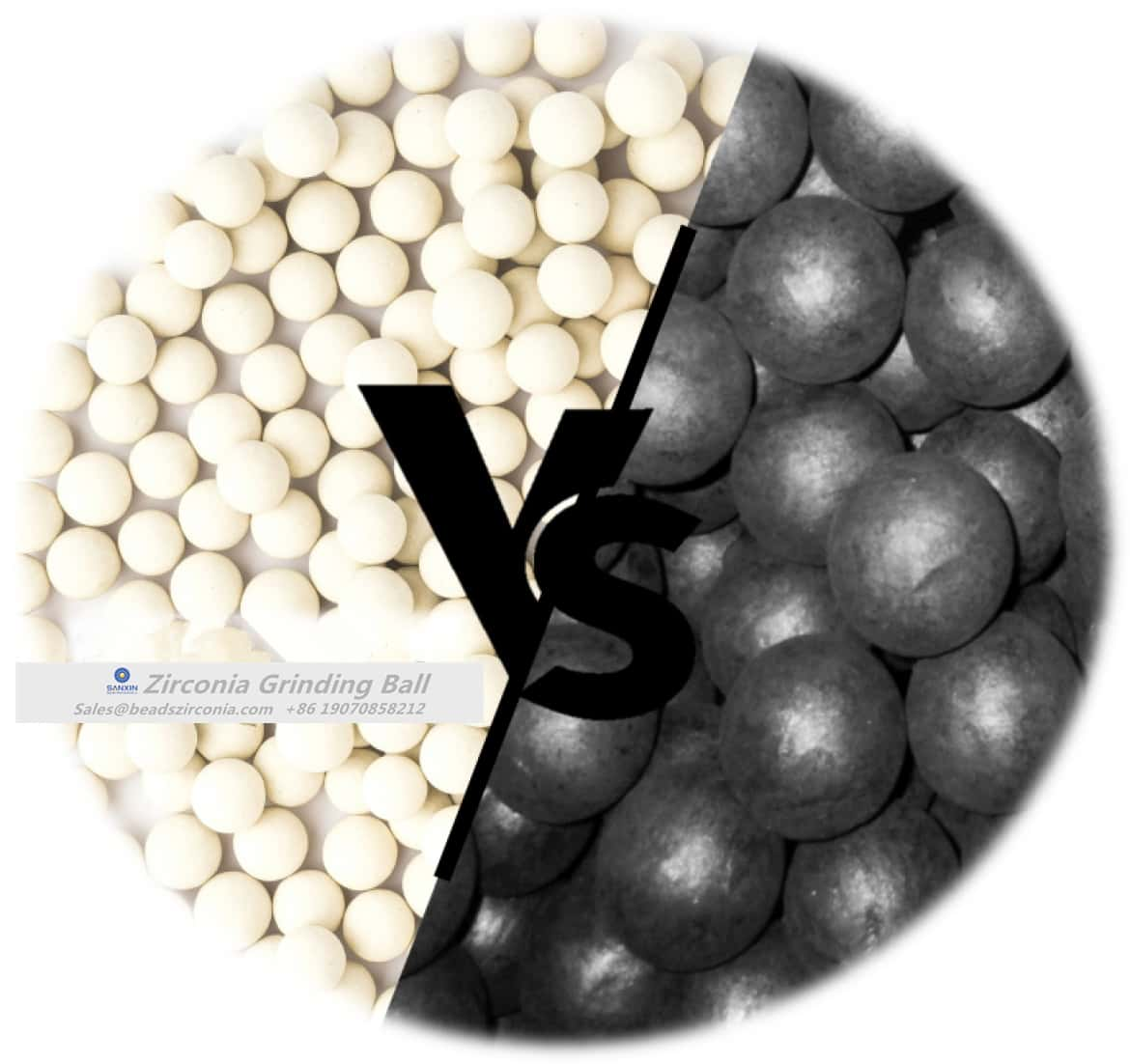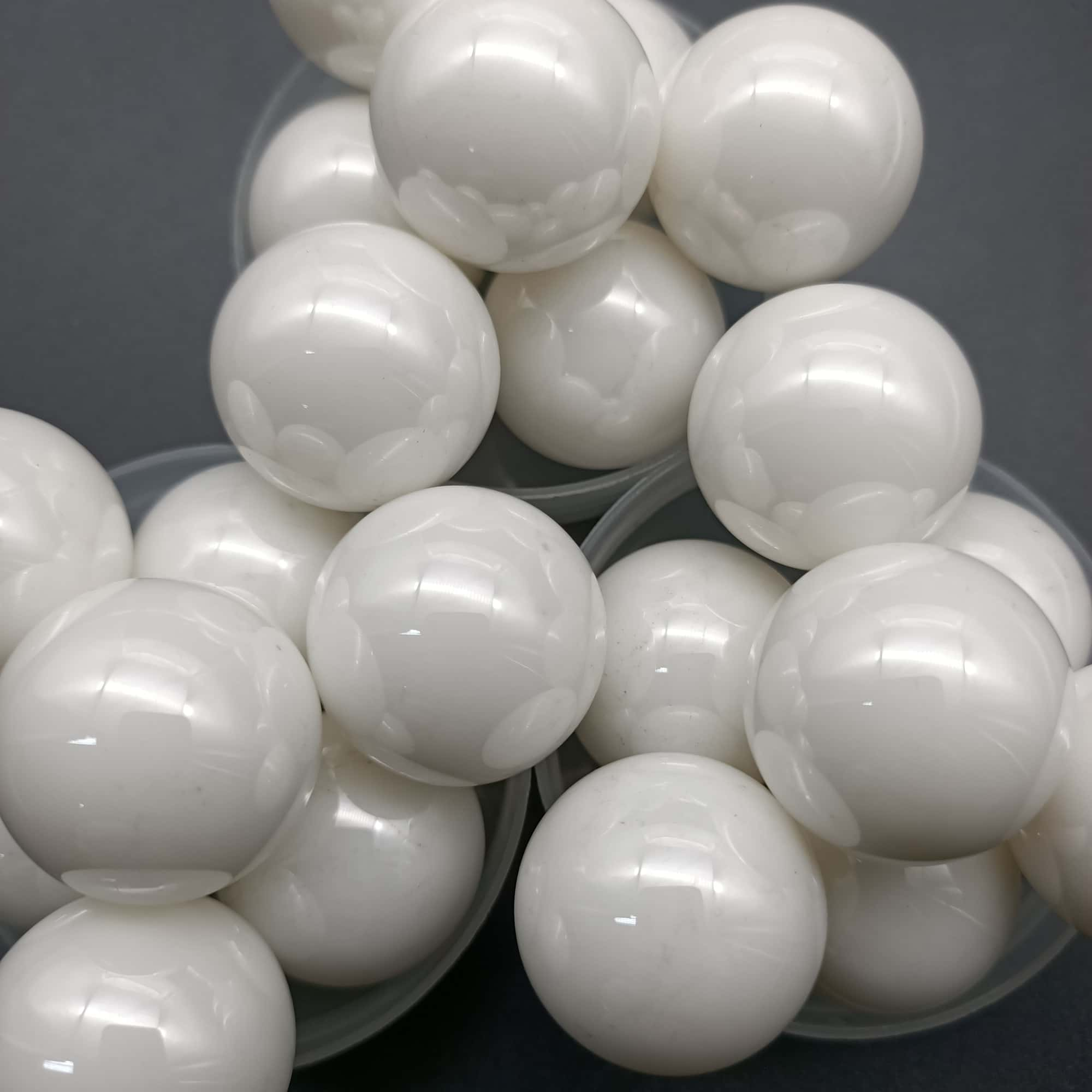Abstract: This research focuses on the feasibility of replacing steel balls with ceramic beads in mining grinding. As the mining industry demands higher production efficiency, energy conservation, and sustainable development, the limitations of traditional steel balls become more prominent. Ceramic beads, with their unique advantages, have become a research focus. Through comparing material properties, analyzing application status and technical challenges, evaluating economic and environmental benefits, and exploring future trends, this paper comprehensively demonstrates the feasibility of this substitution, aiming to support the mining industry's efficient and low - carbon transformation.

In the global mining context, production efficiency, energy conservation, and sustainable development are crucial. Traditional steel balls, once important in mining, now show limitations. Their high density leads to high energy consumption, especially as energy grows scarce and environmental requirements tighten. Steel balls also risk metal contamination, especially in high - purity product - processing like spodumene. Additionally, their poor corrosion resistance in acidic or alkaline slurries shortens lifespan and impacts slurry quality.
To address these, the industry explores alternatives. Ceramic beads, including zirconia, alumina, and silicon nitride beads, stand out for their high hardness, low wear, and corrosion resistance, becoming a research hotspot in mining grinding media.
This paper uses industry data, technical literature, and real - world cases to analyze the substitution's feasibility. It compares material properties, explores application status and challenges, evaluates economic and environmental aspects, and looks at future trends, aiming to objectively assess the substitution and support the mining industry's sustainable development.
Steel balls, with a density of 7.8 - 7.98 g/cm³, have an impact - force advantage in coarse - crushing. But in fine - grinding, their high density burdens equipment and raises energy consumption.
Ceramic beads have a more moderate density. Zirconia beads are about 6.0 g/cm³, and alumina balls are 3.6 - 4.0 g/cm³. In cement grinding, ceramic balls, with 50% the bulk density of steel balls, can cut power consumption by 10% - 20%. Zirconia beads, despite being less dense than steel balls, are denser than other ceramic beads, making them suitable for fine - grinding and nanomaterial dispersion.
Wear resistance is key for grinding media as it impacts lifespan and cost. Ceramic beads excel here.
Zirconia beads have a wear rate of one - millionth, far lower than steel balls (about three - thousandths) and alumina balls (one - and - a - half ten - thousandths). In an Anhui magnetite mine, replacing steel balls with ceramic balls cut grinding power consumption by 51.89% and ball consumption by 50%, bringing economic benefits.
Silicon nitride beads are even more wear - resistant, with a 24 - hour wear rate of one - millionth. This makes them ideal for high - purity powder grinding, like lithium - battery materials, where they prevent impurity contamination and boost product quality.
In mining, slurry often contains acids or alkalis, exposing steel balls' poor corrosion resistance. Corrosion shortens their lifespan and contaminates slurry with metal ions, affecting production and product quality.
Zirconia and silicon nitride beads, however, have excellent chemical stability. In hydrometallurgy, especially when processing iron - sensitive minerals like spodumene, ceramic beads prevent metal - ion contamination, ensuring product quality and expanding mining application scenarios.
Alumina balls, though hard and corrosion - resistant, are brittle and prone to breakage, limiting their use in high - impact scenarios.
To solve this, adding zirconia toughening agents can enhance their toughness. Improving the forming process, like using cold isostatic pressing, also helps. Weihai Yuanhuan Company optimized this process for silicon nitride micro - beads, creating high - density micro - beads under 0.1 mm and solving the brittleness issue, opening up more applications for ceramic beads.

In cement grinding, ceramic balls in the tail bin, combined with the "empty - height operation method" and pre - crushing, save 10% - 20% power while maintaining output. This shows their energy - saving advantage and feasibility in cement production, addressing steel balls' high - energy - consumption problem in the tail - bin stage.
Zirconia beads, valued for their high wear resistance, are used in gold and copper mine secondary grinding, reducing shutdowns for ball replacement and increasing efficiency. In a magnetite mine, using ceramic balls in second - stage grinding optimized overflow product particle - size distribution and cut unit power consumption by over 50%.
Silicon nitride beads shine in high - purity material processing. In lithium - battery separator alumina powder grinding, they replaced zirconia beads, slashing impurity content from 0.53% to 0.01% and enhancing product competitiveness.
Ceramic beads' brittleness restricts their use in impact - crushing bins. Optimizing mill design, like reducing the feed inlet size or adding buffer materials, can lower breakage rates and expand their application.
Due to their low bulk density, ceramic beads require different mill loading. In dry grinding, they need to reach 60% - 70% of steel - ball filling to maintain efficiency. Enterprises must adjust processes and train operators to use ceramic beads effectively.
Zirconia beads' instability at high temperatures restricts their use. Combining with high - temperature - resistant silicon nitride beads or improving the sintering process can expand their application in high - temperature environments.
Zirconia beads, 2 - 3 times costlier than steel balls, seem expensive initially. But considering life - cycle costs, they are advantageous.
In a 20,000 - ton nano - alumina grinding - ball project, with a 250 - million - yuan initial investment, energy - saving and low - maintenance - cost features can shorten the payback period to 5 years. Their low - density - driven energy savings and low - wear - rate - reduced replacement costs bring long - term economic benefits.
Ceramic beads' low density offers great energy - saving potential. A cement plant saved over one million yuan in annual electricity costs after using ceramic balls, with a 3 - 5 kWh reduction in power consumption per ton of cement.
Silicon nitride beads' ultra - low wear rate (one - millionth) reduces purification costs in high - purity powder processing, like lithium - battery materials, by preventing impurity - induced contamination.
The global ceramic - grinding - bead market is growing, expected to exceed $3 billion by 2032. Driven by China's "dual - carbon" goal and environmental policies, China is a major growth area.
The 800V high - voltage platform for new - energy vehicles increases demand for ceramic bearings, especially silicon nitride balls. The market size is expected to reach 3.674 billion yuan by 2027, expanding ceramic - bead applications and driving industry development.
Ceramic - bead production uses green processes like microwave sintering, cutting energy consumption by 30% compared to traditional steel - ball production, reducing carbon emissions.
Waste ceramic beads can be recycled into raw materials, while steel - ball recycling, through remelting, consumes more energy and emits more carbon. Ceramic beads thus contribute to sustainable mining.
Ceramic beads don't release metal ions during grinding, preventing heavy - metal contamination in slurry. In spodumene processing, zirconia beads cut final - product iron content from 0.1% to less than 0.01%, reducing pollution and protecting the environment better than steel balls.
China's "Green Mine Construction Specifications" promote low - consumption and eco - friendly grinding media, supporting ceramic - bead applications. Enterprises using ceramic beads can enjoy tax incentives and subsidies, accelerating their adoption.
As ceramic - bead applications grow, improving industry standards will regulate production and application, enhancing product quality and promoting industry development.
Silicon nitride beads, with a Vickers hardness of 14 - 18 GPa and better fracture toughness than zirconia beads (10 - 13 GPa), offer higher precision in high - purity powder processing, reducing impurities to one - millionth.
In semiconductor - material processing, they can meet strict requirements. As technology matures and costs drop, they may replace traditional ceramic beads in more fields.
Nano - ceramic beads (particle size < 0.1 mm), with large specific surface areas, can enhance grinding efficiency in rare - metal ultra - fine crushing.
Combined with AI - optimized mill parameters, they can achieve 10% - 15% energy savings. AI algorithms adjust mill operations in real - time according to material and grinding needs.
Developing specialized ceramic beads for different ores is a trend. High - zirconium - content beads suit high - hardness ores like quartzite, while composite ceramic beads balance corrosion resistance and toughness for certain ores.
Silicon nitride grinding media rings can improve dry - grinding efficiency and reduce powder agglomeration.
Chinese enterprises, like Weihai Yuanhuan Company, have broken Western technological monopolies in silicon - nitride - micro - bead production, raising domestic production rates from 10% to 40% and cutting costs by 30%.
Domestic substitution reduces procurement costs and promotes the domestic ceramic - bead industrial chain. As domestic R & D and production improve, the industrial chain will support wider ceramic - bead use in mining.

Submit your demand,
we will contact you ASAP.

Sanxin New Materials Co., Ltd. focus on producing and selling ceramic beads and parts such as grinding media, blasting beads, bearing ball, structure part, ceramic wear-resistant liners, Nanoparticles Nano Powder

